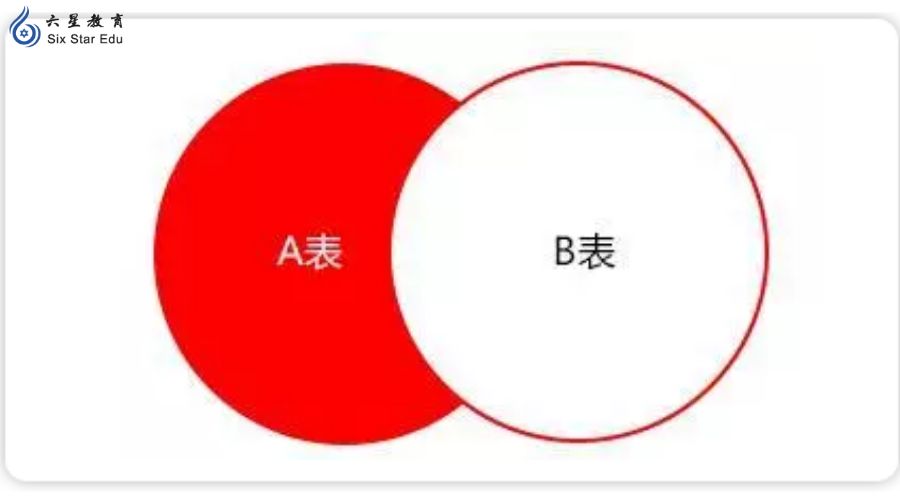
一、MySQL的join buffer**
在MySQL对于join操作的处理过程中,join buffer是一个重要的概念,也是MySQL对于table join的一个重要的优化手段。虽然这个概念实现并不复杂,但是这个是实现MySQL join连接优化的一个重要方法,在"暴力"连接的时候可以极大提高join查询的效率。
关于这个概念的权威说明当然是来自MySQL文档中对于这个概念的说明,说明的文字不多,但是言简意赅,说明了这个优化的主要实现思想:
Assume you have the following join:
Table name Type
t1 range
t2 ref
t3 ALL
The join is then done as follows:
- While rows in t1 matching range
- Read through all rows in t2 according to reference key
- Store used fields from t1, t2 in cache - If cache is full - Read through all rows in t3
- Compare t3 row against all t1, t2 combinations in cache - If row satisfies join condition, send it to client - Empty cache - Read through all rows in t3
- Compare t3 row against all stored t1, t2 combinations in cache - If row satisfies join condition, send it to client
二、join buffer cache存储空间的分配
下面函数中table_count表示的就是所有join table中在该table之前的非const table数量,因为这个table要缓存自己之前所有table中的每条记录中"需读取"(tables[i].table->read_set置位)。
其中两重循环每次执行都是复制下需要缓存的field的描述结构(及其对应的数据源),或者说,二重循环只是为了赋值和保存元数据,而最后的cache->buff=(uchar*) my_malloc(size,MYF(0))才是真正的分配满足条件的记录内容。
static int
join_init_cache(THD *thd,JOIN_TAB *tables,uint table_count)
{
…… for (i=0 ; i < table_count ; i++)
{ bool have_bit_fields= FALSE;
uint null_fields=0,used_fields;
Field **f_ptr,*field;
MY_BITMAP *read_set= tables[i].table->read_set; for (f_ptr=tables[i].table->field,used_fields=tables[i].used_fields ;
used_fields ;
f_ptr++)
{
field= *f_ptr; if (bitmap_is_set(read_set, field->field_index))
{
used_fields--;
length+=field->fill_cache_field(copy);
……
}
}
cache->length=length+blobs*sizeof(char*);
cache->blobs=blobs;
*blob_ptr=0; /* End sequentel */ size=max(thd->variables.join_buff_size, cache->length); if (!(cache->buff=(uchar*) my_malloc(size,MYF(0))))
DBUG_RETURN(1); /* Don't use cache */ /* purecov: inspected */ cache->end=cache->buff+size;
reset_cache_write(cache);
DBUG_RETURN(0);
}
三、普通的多表查询实现
这个"普通"当然也可以理解为"朴素"、"直观"的意思,也是大部分情况下的执行流程。普通查询其实就是对于对于各个表格进行递归调用,和矩阵的乘法一样一样的,这个对应非常直观,也非常通用。
而这个常规的查询动作就是通过sub_select函数来实现,这个函数本质性上是执行
tsecer_select()
{ for (r = first ; r != end ; r = next)
{ if(sofartest())
{ nexttable.tsecer_select()
}
}
}
其中的sofartest()表示"使用所有当前已读取表格可以进行的判断",也就是where中下推的表达式。例如 select * from a, b where a.a > 10 and b.b + a.a = 10,在a表读取之后,其实已经可以执行 a.a > 10的判断。当然这个是一个甚至算不上伪代码的描述方法,而真正的代码对应为:
enum_nested_loop_state sub_select(JOIN *join,JOIN_TAB *join_tab,bool end_of_records) {
……
error= (*join_tab->read_first_record)(join_tab);
rc= evaluate_join_record(join, join_tab, error);
…… while (rc == NESTED_LOOP_OK)
{
error= info->read_record(info);
rc= evaluate_join_record(join, join_tab, error);
}
…… return rc;
} static enum_nested_loop_state evaluate_join_record(JOIN *join, JOIN_TAB *join_tab, int error) {
…… if (select_cond)
{
select_cond_result= test(select_cond->val_int()); /* check for errors evaluating the condition */ if (join->thd->is_error()) return NESTED_LOOP_ERROR;
}
…… if (found)
{ enum enum_nested_loop_state rc; /* A match from join_tab is found for the current partial join. */ rc= (*join_tab->next_select)(join, join_tab+1, 0); if (rc != NESTED_LOOP_OK && rc != NESTED_LOOP_NO_MORE_ROWS) return rc; if (join->return_tab < join_tab) return NESTED_LOOP_OK; /*
Test if this was a SELECT DISTINCT query on a table that
was not in the field list; In this case we can abort if
we found a row, as no new rows can be added to the result.
*/ if (not_used_in_distinct && found_records != join->found_records) return NESTED_LOOP_NO_MORE_ROWS;
}
……
}
这里可以看到,这个地方是一个递归,用来产生一个笛卡尔叉乘集合,从程序实现和数学表达上看都非常简洁可爱。
在MySQL的实现中,tsecer_select函数中的for循环大致相当sub_select中的while循环,而tsecer_select函数中循环体内的内容被放在了evaluate_join_record函数中,其中的sofartest对应evaluate_join_record::test(select_cond->val_int());tsecer_select中的nexttable.tsecer_select()语句对应evaluate_join_record::(*join_tab->next_select)(join, join_tab+1, 0)。
四、join buffer的select实现
当使用join buffer cache时,next_select函数指向sub_select_cache
enum_nested_loop_state sub_select_cache(JOIN *join,JOIN_TAB *join_tab,bool end_of_records) {
enum_nested_loop_state rc; if (end_of_records)
{
rc= flush_cached_records(join,join_tab,FALSE); if (rc == NESTED_LOOP_OK || rc == NESTED_LOOP_NO_MORE_ROWS)
rc= sub_select(join,join_tab,end_of_records); return rc;
} if (join->thd->killed) // If aborted by user { join->thd->send_kill_message(); return NESTED_LOOP_KILLED; /* purecov: inspected */ } if (join_tab->use_quick != 2 || test_if_quick_select(join_tab) <= 0)
{ if (!store_record_in_cache(&join_tab->cache)) return NESTED_LOOP_OK; // There is more room in cache return flush_cached_records(join,join_tab,FALSE);
}
rc= flush_cached_records(join, join_tab, TRUE); if (rc == NESTED_LOOP_OK || rc == NESTED_LOOP_NO_MORE_ROWS)
rc= sub_select(join, join_tab, end_of_records); return rc;
}
结合MySQL文档中的说明,这里的代码意义就比较明显。开始对于end_of_records的判断对应的就是
if (!store_record_in_cache(&join_tab->cache)) return NESTED_LOOP_OK; // There is more room in cache return flush_cached_records(join,join_tab,FALSE);
对应
- Store used fields from t1, t2 in cache - If cache is full
其中store_record_in_cache函数会判断cache是否已满,如果cache可以放入更多的缓存,则把之前table的组合记录存储在cache中,并返回NESTED_LOOP_OK。注意:这个地方可以说是整个cache优化的关键,因为这里并没有启动对于table的扫描。反过来说,如果cache数据已经满了,则调用flush_cached_records函数来进行下面的流程
- Read through all rows in t3
- Compare t3 row against all t1, t2 combinations in cache - If row satisfies join condition, send it to client - Empty cache
这个流程的特殊之处在于遍历的驱动是通过对于table的每一条记录来和cache中所有t1、t2组合来进行比较,来判断是否满足下推where条件(If row satisfies join condition),则执行join_tab->next_select函数(send it to client)。
static enum_nested_loop_state
flush_cached_records(JOIN *join,JOIN_TAB *join_tab,bool skip_last)
{
……
info= &join_tab->read_record; do {//遍历t3表格所有记录 …… for (i=(join_tab->cache.records- (skip_last ? 1 : 0)) ; i-- > 0 ;)
{//遍历cache中所有t1、t2记录组合 read_cached_record(join_tab);
skip_record= FALSE; if (select && select->skip_record(join->thd, &skip_record))
{// reset_cache_write(&join_tab->cache); return NESTED_LOOP_ERROR;
} if (!skip_record)
{//满足下推的where条件 //执行下一个table的遍历 rc= (join_tab->next_select)(join,join_tab+1,0); if (rc != NESTED_LOOP_OK && rc != NESTED_LOOP_NO_MORE_ROWS)
{
reset_cache_write(&join_tab->cache); return rc;
}
}
……
} while (!(error=info->read_record(info)));
五、举例来说明下这个流程
这个实现的核心思想并不复杂,结合具体的例子来看就更加的简单直观。
举个例子,其中使用两个简单的table,其中分别存储一个x,和y的值,我们希望通过一个join操作来计算这两个表格中所有的满足 x x + y y == 5 * 5,也就是我们最常见的"勾三股四弦五"这样的经典勾股数数值。
mysql> create table harry (x int);
Query OK, 0 rows affected (0.03 sec)
mysql> insert harry values (1),(2),(3),(4),(5);
Query OK, 5 rows affected (0.00 sec) Records: 5 Duplicates: 0 Warnings: 0 mysql> create table tsecer (y int);
Query OK, 0 rows affected (0.01 sec)
mysql> insert tsecer values (1),(2),(3),(4),(5);
Query OK, 5 rows affected (0.00 sec) Records: 5 Duplicates: 0 Warnings: 0 mysql> explain select * from harry, tsecer where x * x + y * y = 5 * 5;
+----+-------------+--------+------+---------------+------+---------+------+------+--------------------------------+ | id | select_type | table | type | possible_keys | key | key_len | ref | rows | Extra |
+----+-------------+--------+------+---------------+------+---------+------+------+--------------------------------+
| 1 | SIMPLE | harry | ALL | NULL | NULL | NULL | NULL | 5 | | | 1 | SIMPLE | tsecer | ALL | NULL | NULL | NULL | NULL | 5 | Using where; Using join buffer |
+----+-------------+--------+------+---------------+------+---------+------+------+--------------------------------+
2 rows in set (0.00 sec)
mysql>
1、不使用joinbuffer
在不使用join buffer的情况下,对于harry表的每个x值,对应的tsecer表都要进行一次全表扫描,之后使用这个x和y的组合判断是否满足x x + y y == 5 * 5这条件。由于x总共有5个值,所以tsecer需要全表扫描的次数就是5次。
2、使用joinbuffer
对于x的每个值,tsecer表在执行的时候先是把这个值缓存到joinbuffer中,如果buffer缓冲内容非空,那么把此时的x的值存储在buffer中后直接返回;当join buffer满或者是最后一条记录的时候,此时开始启动对于tsecer表的扫描,对于tsecer表中读取的每一个记录,结合前面缓存的每一个记录,看是否满足自己判断条件。
对于我们看到的例子,这个地方harry表的5个值都在缓存中,在tsecer表的扫描过程中,对于从tsecer中读取的每一条记录,结合缓存中的“每一条”缓存,判断这个组合结果是否满足条件,如果任意一个组很满足,那么就继续next_select。
在这个使用buffer的例子中,可以看到这个地方只是对于tsecer表进行了一次扫描,而通常来说,数据库的扫描代码是最高的(因为要涉及到磁盘读取),这样使用buffer的方式将tsecer表的扫描降低为1次,所以这个效率提高很多,特别是在涉及到的多个table,并且/或者 每个table中的记录数量都很多的情况下。
3、cache可以优化的原因
本质上说,这个效率提高的原因在于提高了从table中获得的每条记录的“利用率”,在使用直观扫描方式时,table的全表扫描只是和一个组合进行匹配,而使用buffer之后则是和cache中的所有组合进行匹配。
扫码二维码 获取免费视频学习资料

- 本文固定链接: http://phpxs.com/post/7567/
- 转载请注明:转载必须在正文中标注并保留原文链接
- 扫码: 扫上方二维码获取免费视频资料

